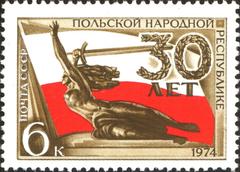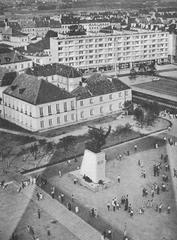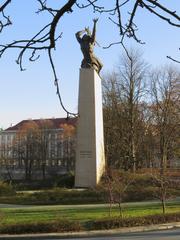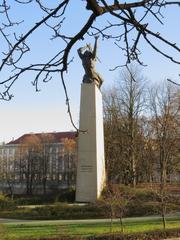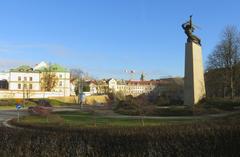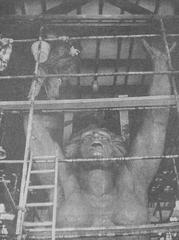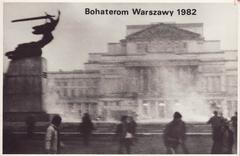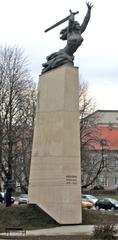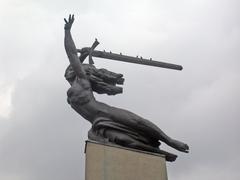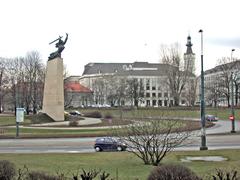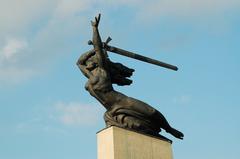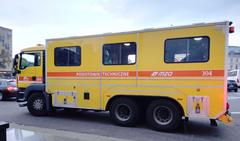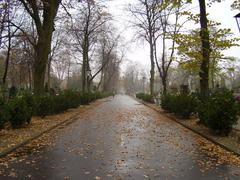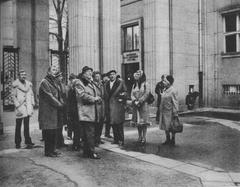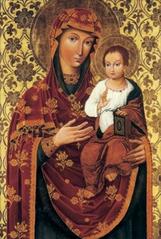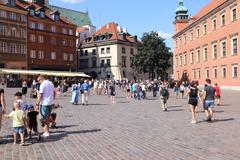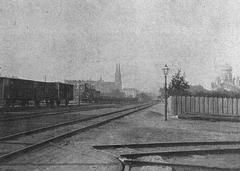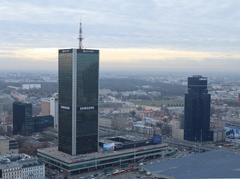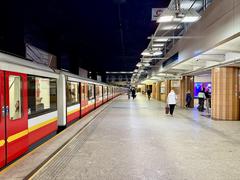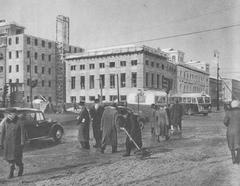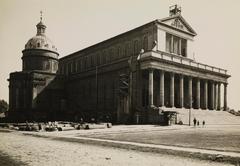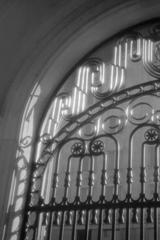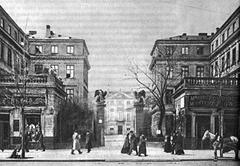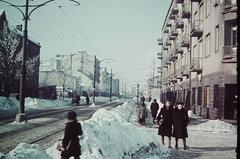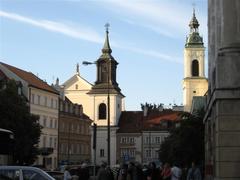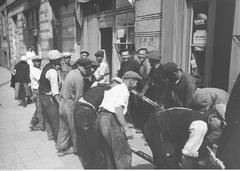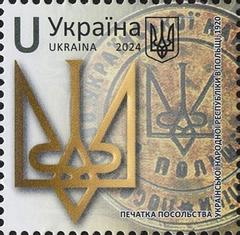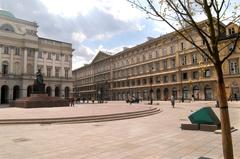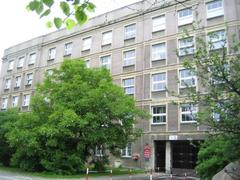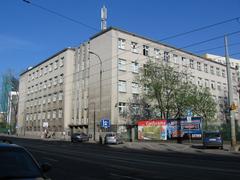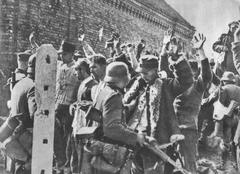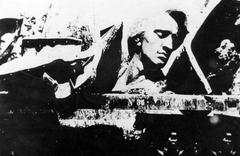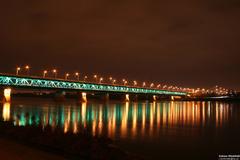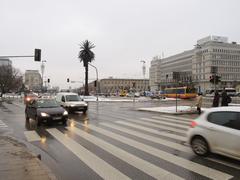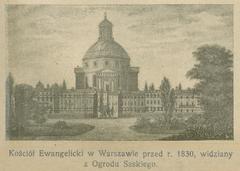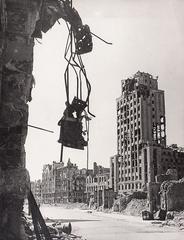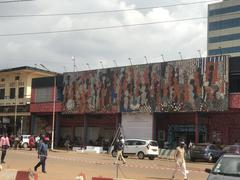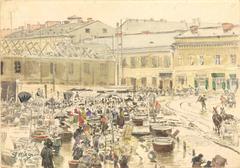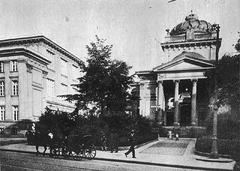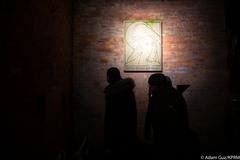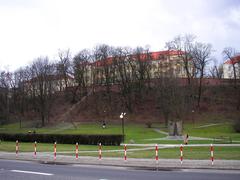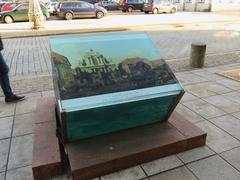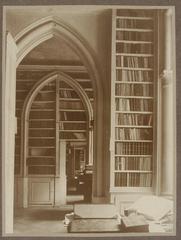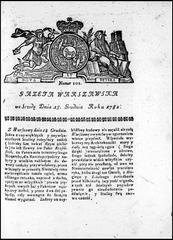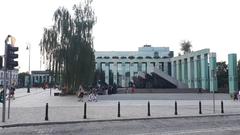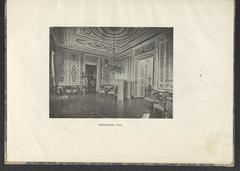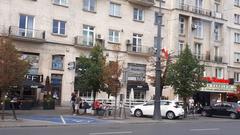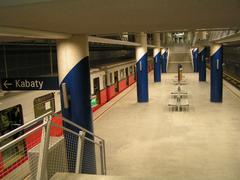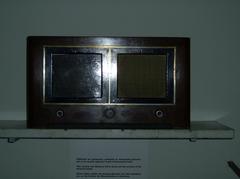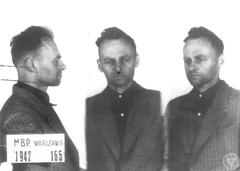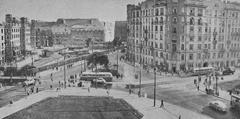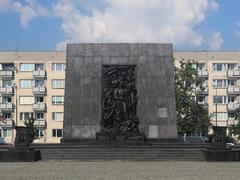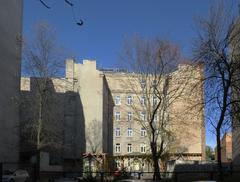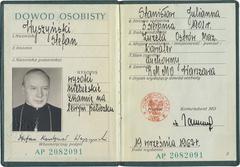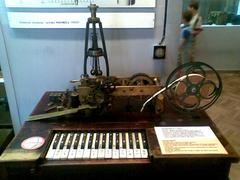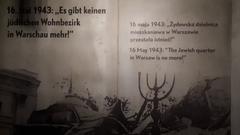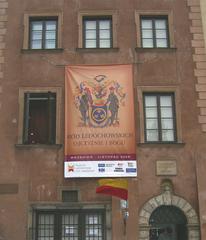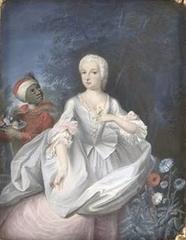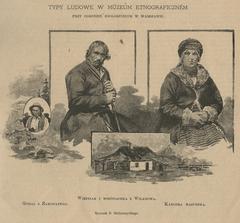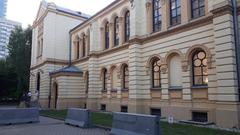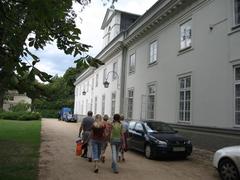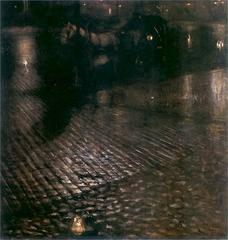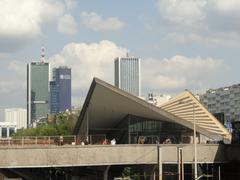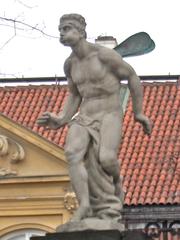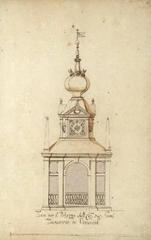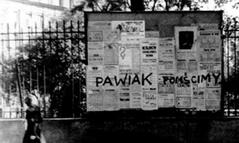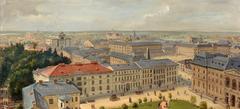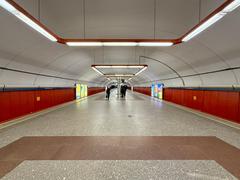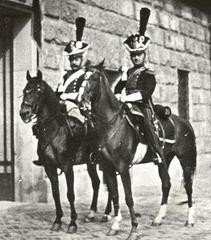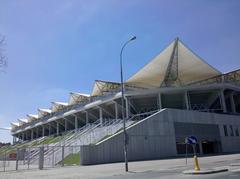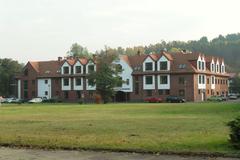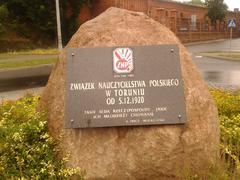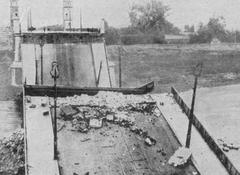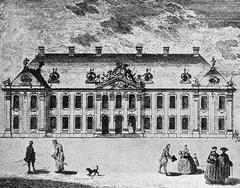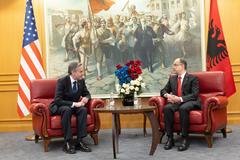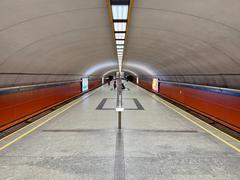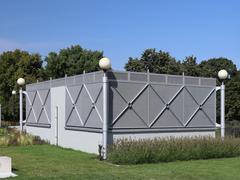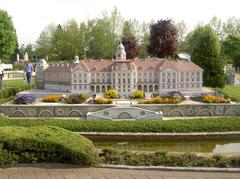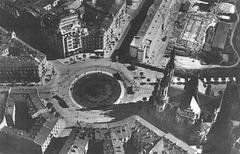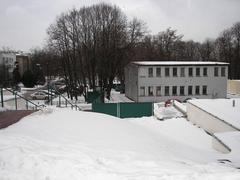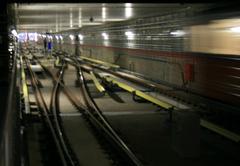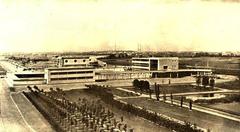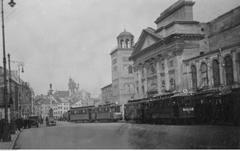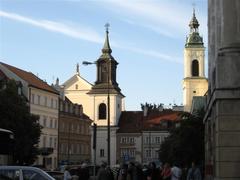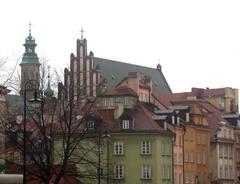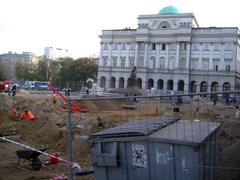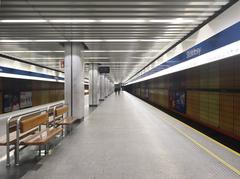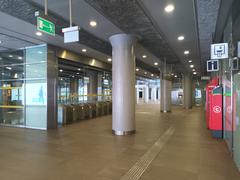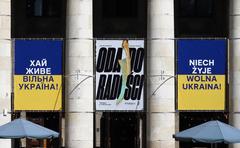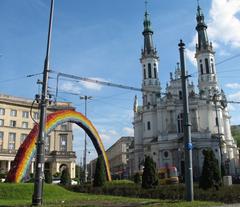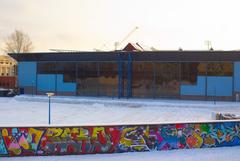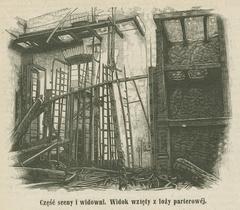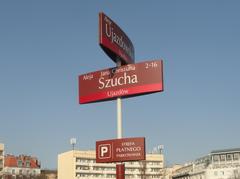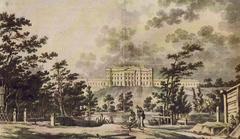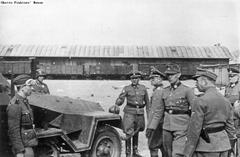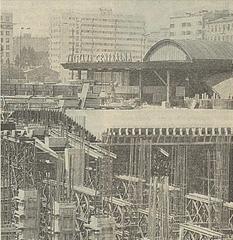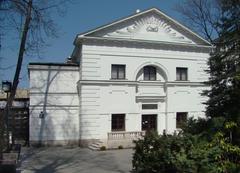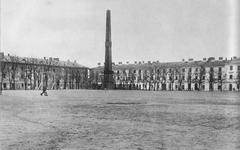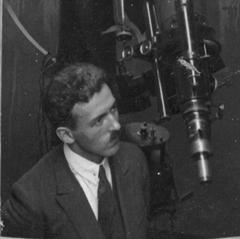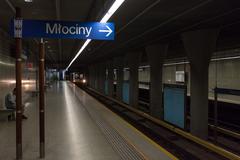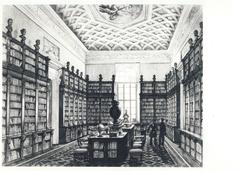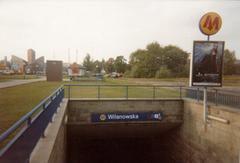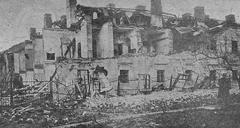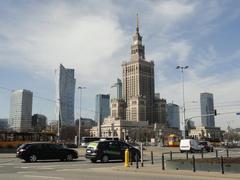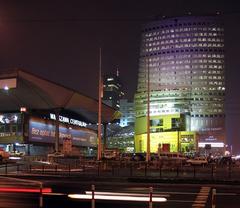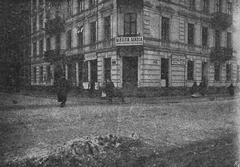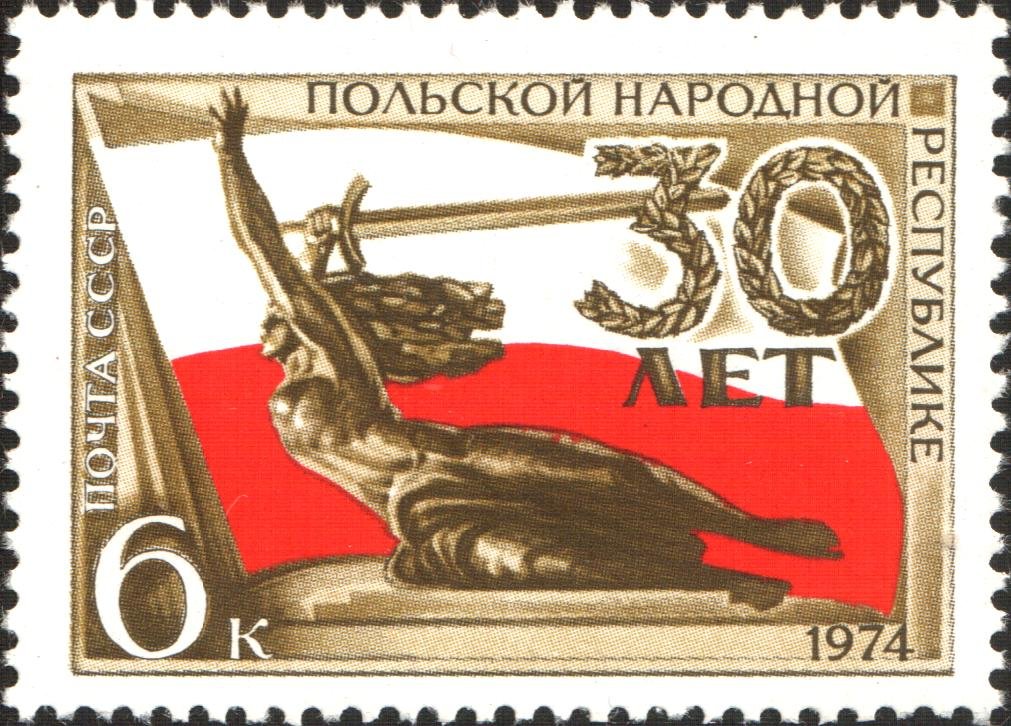
Visiting Nike in Warsaw, Poland: History, Significance, Visitor Tips, and More
Date: 31/07/2024
Introduction
The Nike Monument, officially known as the Monument to the Heroes of Warsaw, stands as one of the most significant landmarks in Warsaw, Poland. Erected to honor the valiant efforts of Polish resistance fighters during World War II, especially those who participated in the Warsaw Uprising of 1944, this monument encapsulates the spirit of resilience and sacrifice that characterized one of the darkest periods in the city’s history. Designed by sculptor Marian Konieczny and unveiled on July 20, 1964, the monument has become an enduring symbol of victory and national pride (Wikipedia).
The Nike Monument is not just a tribute to the past but a focal point for commemorative events, educational programs, and cultural expressions that continue to resonate with both locals and tourists. Its strategic location in the Wola district, near prominent historical sites such as the Warsaw Uprising Museum and the Jewish Ghetto Memorial, makes it an essential stop for anyone seeking to understand Warsaw’s wartime history (Wise Visitor).
This comprehensive guide aims to provide all the necessary information for a memorable visit to the Nike Monument. From its historical context and design symbolism to practical visitor tips and nearby attractions, this guide is designed to enhance your understanding and appreciation of this iconic site.
Table of Contents
- Introduction
- Origins and Construction
- Symbolism and Design
- Historical Context
- Restoration and Preservation
- Visitor Experience
- Commemorative Events
- Cultural Impact
- Practical Information for Visitors
- FAQ Section
- Conclusion
Origins and Construction
The Nike Monument was erected to commemorate the valiant efforts of the Polish resistance fighters during World War II, particularly those who participated in the Warsaw Uprising of 1944. Designed by sculptor Marian Konieczny, the monument was unveiled on July 20, 1964, marking the 20th anniversary of the uprising. Standing at a height of 14 meters and made of bronze, it depicts the Greek goddess Nike, symbolizing victory and the indomitable spirit of the Polish fighters.
Symbolism and Design
The design of the Nike Monument is rich in symbolism. Nike is portrayed with a sword in her right hand and a shield in her left, ready for battle. This imagery powerfully represents the struggle and resistance against the Nazi occupation. The dynamic pose of the statue, with Nike seemingly in mid-flight, conveys a sense of urgency and determination. The pedestal is inscribed with the words “To the Heroes of Warsaw,” and features reliefs depicting scenes from the Warsaw Uprising.
Historical Context
The Warsaw Uprising began on August 1, 1944, lasting for 63 days. It was a major operation by the Polish underground resistance, the Home Army (Armia Krajowa), to liberate Warsaw from German occupation. Despite initial successes, the uprising was brutally suppressed by the Nazis, resulting in the deaths of approximately 200,000 civilians and the near-total destruction of the city. The Nike Monument serves as a poignant reminder of the sacrifices made by the Polish people during the uprising.
Restoration and Preservation
Over the years, the Nike Monument has undergone several restoration efforts to preserve its structural integrity and aesthetic appeal. In 2004, on the 60th anniversary of the Warsaw Uprising, the monument was thoroughly cleaned and refurbished. Maintenance is regularly conducted by the city of Warsaw to address any wear and tear, ensuring the monument remains a lasting tribute to the heroes of Warsaw.
Visitor Experience
Getting There
The Nike Monument is located in the heart of Warsaw, in the Wola district, near the intersection of Solidarności Avenue and Okopowa Street. The site is easily accessible by public transportation, with several bus and tram stops nearby. Visitors can take in the impressive sight of the statue and its detailed reliefs, and the surrounding area offers benches and green spaces for reflection. Informational plaques in multiple languages provide insights into the history and significance of the monument.
Best Time to Visit
While the monument can be visited year-round, the best time to visit is during the spring and summer months when the weather is pleasant. This allows for a more comfortable experience when exploring the surrounding areas and other nearby attractions.
Accessibility
The monument is accessible to visitors with disabilities, with pathways and viewing areas designed to accommodate wheelchairs. Public transportation in Warsaw is also equipped to accommodate passengers with disabilities, with low-floor trams and buses available on most routes.
Nearby Attractions
Visitors to the Nike Monument can also explore several other historical landmarks in Warsaw. The Warsaw Uprising Museum offers an immersive experience into the history of the 1944 uprising, featuring life-sized reconstructions of underground tunnels and bunkers used by resistance fighters (Explore Warsaw). The Royal Castle, a reconstruction of the original 17th and 18th-century structure, provides insight into Poland’s royal history (Lonely Planet).
Safety Tips
While Warsaw is generally a safe city, it is always advisable to stay aware of your surroundings, especially in busy tourist areas. Keep your belongings secure and be cautious when crossing busy roads near the monument.
Guided Tours
For a more in-depth understanding, consider joining a guided tour. Several tour operators in Warsaw offer specialized tours focusing on the city’s World War II history, including the Nike Monument.
Commemorative Events
The Nike Monument is a focal point for commemorative events, particularly those related to the Warsaw Uprising. Each year on August 1, a solemn ceremony is held at the monument to mark the anniversary of the uprising, including speeches, wreath-laying, and moments of silence. The monument is also a site for educational programs and guided tours, aimed at educating the public about the history of the Warsaw Uprising and the broader context of World War II.
Cultural Impact
The Nike Monument has become an iconic symbol of Warsaw’s resilience and determination. It is featured in numerous cultural works, including literature, film, and art. The monument’s powerful imagery and historical significance have inspired artists and writers to explore themes of resistance, sacrifice, and national identity. Its cultural impact extends beyond Poland, resonating with audiences worldwide.
Practical Information for Visitors
- Location: The monument is located in the Wola district of Warsaw, near the intersection of Solidarności Avenue and Okopowa Street. It is easily accessible by public transportation.
- Opening Hours: The monument is accessible to the public 24/7. It is recommended to visit during daylight hours to fully appreciate the details of the statue and reliefs.
- Admission: There is no admission fee to visit the monument. It is a public space open to all.
- Dining Options: After visiting the monument, you might want to grab a meal or a drink. The Wola Park Mall is a convenient option, offering a variety of dining choices. However, getting there can be somewhat challenging. From the Old Town, take Bus 190 to Księcia Janusza and transfer to either Bus 197 or Bus 201, which still requires an 8-minute walk afterwards. From the Centrum, take the M2 to Księcia Janusza, and switch to the same bus.
- Photography Tips: The Nike Monument is a popular spot for photography, especially during the golden hours of sunrise and sunset. If you want to capture the monument in the best light, plan your visit accordingly. Early morning visits can provide a serene atmosphere with fewer crowds, while evening visits offer the opportunity to capture the monument illuminated against the night sky. Remember to respect the monument and other visitors while taking photos.
FAQ Section
What are the Nike Monument visiting hours?
The monument is accessible 24/7, but it is recommended to visit during daylight hours for better visibility.
Is there an admission fee for the Nike Monument?
No, there is no admission fee. The monument is a public space open to all.
How can I get to the Nike Monument?
The monument is located in the Wola district of Warsaw, near the intersection of Solidarności Avenue and Okopowa Street. It is easily accessible by public transportation, with several bus and tram stops nearby.
Are guided tours available at the Nike Monument?
Yes, several tour operators offer guided walking tours that include the Nike Monument. These tours provide valuable insights into the monument’s history and significance.
Conclusion
The Nike Monument in Warsaw serves as a powerful reminder of the city’s turbulent history and the indomitable spirit of its people. Its rich symbolism and historical significance make it a must-visit destination for anyone interested in understanding Warsaw’s past. From its portrayal of the Greek goddess Nike to its poignant inscriptions and detailed reliefs, the monument offers a deeply moving experience that resonates with visitors from around the world (Explore Warsaw).
Whether you are exploring Warsaw’s historical landmarks, participating in commemorative events, or simply reflecting on the stories of courage and sacrifice, the Nike Monument provides a meaningful and enriching experience. It stands not only as a tribute to the heroes of Warsaw but also as a beacon of resilience and hope for future generations. For those planning a visit, the practical tips, visitor information, and nearby attractions outlined in this guide ensure a comprehensive and memorable experience.
References
- Wikipedia, 2024, Marian Konieczny source url
- Wise Visitor, 2024, Warsaw Uprising source url
- Explore Warsaw, 2024, Historical Landmarks source url
